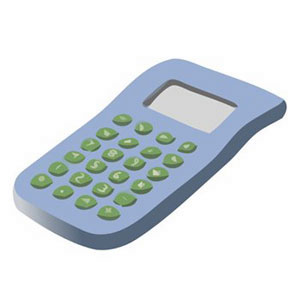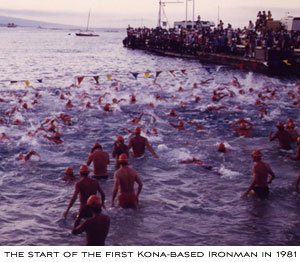Musselman by the numbers

Editor's note: This is the eleventh of a series of thirteen weekly articles originally published on Slowtwitch in 2003/4. The articles chronicle newbie RD Jeff Henderson's journey toward the production of his first race: the Musselman Triathlon in Upstate New York. After these 13 weeks worth of diary entries, we'll flow directly into a new series Jeff is writing for us, where he talks about his challenges and goals now, as he prepares for Year-7 of Musselman.
All I think about nowadays are numbers. We're a month out from the Musselman Triathlon, and I need to finalize orders and collect materials needed for raceday. It being the first annual, most figures are of the fuzzy variety—estimates with a lot of room to wiggle—because the last thing I want to do is run out of something. Since June is all about numbers, this article will be all about numbers. If you're a mathematician or accountant or actuary, hopefully you'll enjoy this. If you're not, consider it a chance to become well-rounded.
The first numbers we'll consider are registration numbers. As of June 2nd, the three races have 319 registrants. That's 105 women and 214 men—exactly mirroring the proportion of women carrying annual USAT memberships (32%). 319 registrants breaks down into 220 in the half-iron, 95 in the sprint, and 4 in the kid's race. Kids are procrastinators.
Of these athletes, 264 paid online by credit card, 54 sent in a check, and one pinchpenny paid by cash. If you're holding a race and considering offering online entry, consider that 83% of my entries came that way. I comped two entries, one for a fellow Race Director, one for a sponsor (ClifBar). A full 40% of registrants paid $9 for a one-day USAT membership, and since I pay 2.39% of every credit card transaction, our race absorbed $23.25 on behalf of USAT to collect these fees. Five individuals followed the instructions on the website and requested refunds properly by May 15th; four ne'er-do-wells missed the deadline but asked anyway.
The individuals signed up for the races encompass 22 states in the Union, two provinces in Canada, and one curiosity from England. Since January 15th, when we opened registration, the most popular day for entering was May 31st, the day before a price hike of $10 for the sprint and $15 for the half-iron. The second most popular day? March 14th, the day before our first price hike. Money is a motivator.
Ponderously, the day after our price increases did not see a dearth of entries; we still received four entries on March 15th and three on June 1st. The individual registering first on June 1st? Gregg Fergot. (I am not making this up.)
To make you aware of the Musselman, we spent $1,427. That includes $850 for ads in triathlon publications, $210 for 5,000 postcards to be distributed on windshields and in goody bags at nearby races, and $367 for a thousand 11"x 17" posters to hang in every bar, health club, barber shop, and grocery store in New York State. If you're a state resident and haven't seen one of these posters, you either don't get out much or we're doing something horribly wrong.
Once we get your attention, you might visit the official Musselman website. Traffic to the website has risen steadily since December, when we forked over $7.99 to buy musselmantri.com. In May, 151,000 hits were registered to the various pages within. Our biggest day ever, in terms of hits, was that fateful April 2nd when the McMussel fully hit the airwaves (I wrote an article on Slowtwitch detailing McDonalds' alleged sponsorship had been posted late in the day on April 1st): fully 9% of April's visitors came that day, to the tune of 13,875 hits (compare this to average daily hit counts of 4,000). In the six months you have been viewing the site, what's the most popular time of day for you to do so? 1 pm, smack in the middle of the workday. Shame on you.
Our total expenses hover around $40,000, though this changes daily and with the humidity. Without sponsorships, this number would be exponentially larger and there would be no Musselman. The event has secured sponsorship—either cash or product, though usually product—from 40 different companies. This runs the gamut from a local winery pitching in two bottles of wine to Wegmans grocery store, the provider of all of the food for the post-race meal and a pallet of bottled water to keep you from getting thirsty.
Let's do a comparison between one of the biggest companies in Geneva and one of the smallest. Wal-Mart you have probably heard of; Seneca Shores Winery, maybe not. Seneca Shores bottles 5,000 cases of wine each year and sells all of it. Their donation of 3 bottles of wine represents 0.005% of production and, therefore, sales. Wal-Mart once again topped the Fortune 500 this year with $259 billion in gross sales. Their contribution of a $50 gift certificate represents 0.0000000193% of profits.
The Finger Lakes region is the second-biggest wine-producing region in the Unites States, behind Sonoma and Napa Valleys in California. In January and February my wife and I made weekly pilgrimages down the wine trail, requesting donations for the race from the dozens of wineries lining the shores of Seneca and Cayuga Lakes. You might say we were mildly successful: twenty wineries donated 269 bottles of Reislings, Chardonnays, and Pinoirs, to name a few. In March we struck the mother lode; Chateau LaFayette Reneau offered to print custom labels for three of its finest Chardonnays, to be given as awards for the half-iron. The 60 bottles donated from this single winery amount to over $1,000 in retail value.
With all of these sponsorships, what does your entry fee pay for? Allow me to introduce Seneca Lake State Park, our venue and part of the New York State Park system. There exists a park closer to the city of Geneva—Lakefront Park, which abuts Seneca Lake State Park to the west—but Geneva's park lacks a suitable way into the lake (save a boat launch) and little parking, so we decided to hold the race in the state park.
For the privilege of a small beach and expansive parking, we paid New York State $200 for a permit (compare this to Lakefront Park's permit fee of $25). We rented a picnic pavilion near the finish line for $100. The park has an entrance fee, which we are paying as part of the race entry fee: $5 per car, and if you figure 500 athletes driving, that's $2,500. We are required by USAT to have one lifeguard per 50 athletes; with 250 athletes in the water at any one time, that works out to five lifeguards. The State Park requires use of their own guards, who get $15 per hour. Three hours of work, five guards, $225. We have to use the Park Police to control the only intersection in the park; they get $50/hour and we'll need them for eight hours: $400. All told the fees associated with using Seneca Lake State Park amount to $3,425 assuming we end up with 500 athletes and they all drive.
On to something more pleasant: aid stations! The kind folks at Carb-BOOM have sent 2,400 gels to keep you going for 70 (or 18) miles. That's 3,360 ounces, or 26.25 gallons of fuel. If the cost of fueling your body were comparable to the cost of fueling you car ($2 per gallon), you would pay 2 cents for a gel packet at the store.
We have fifteen aid stations on the various courses, being manned by roughly 60 individuals. There is one just outside the transition area, five on the bike, and nine on the run. One of the bike aid stations doubles for the sprint and long course; the same is true for the run courses. Two of the run aid stations are used twice, for athletes coming and going. At a sample bike aid station, we will have Carb-BOOM gels, Clifbars, bananas, animal crackers, pretzels, water, ice, Amino Vital, H.E.E.D. (an electrolyte-replacement beverage from Hammer Nutrition), Red Bull, and infrastructure: coolers, tables, chairs, cups, water bottles, trash containers, and a tarp. If sponsorships did not exist and the Musselman had to purchase each of these items at retail—and I am only considering the food and drink items here—a sample aid station on the bike would cost $2,625. The run is slightly cheaper because cups cost less than water bottles; these aid stations would cost about $1,510 each.
Our final consideration is the national governing body for our sport: USAT. The USAT sanction application consists of eleven pages, plus you have to send in course maps. There are 128 "Requirements and Guidelines" a race director must adhere to, everything from how to deal with missing swimmers to how many doctors your medical team must have. We paid $290 for our sanction, and if we get our post-race materials in on time, $150 will come back. The Musselman requested three officials; this is not a requirement but if you do have them, you have to pay and house them: $435 for the three. Assuming 40% of our estimated 500 athletes pay for a one-day USAT membership, $1,800 will be going their way. In the credit column, I have applied for up to $1,000 in USAT cash grants, for first-time races and first-time race directors.
I'm including the one-day membership fee as a race expense because that's the way it looks to athletes: the entry fee is $119, not $110. And that's how my insurance is paid; the sanction includes $2 million in liability insurance, enough to satisfy even the State Park. Bottom line USAT fees: $2,525, though this could be $1,375 if grants are awarded and we get our materials in on time.
So there you have it folks, in black and red. There are a million different ways (or, more precisely, 1,674 different ways) to quantify this grand experiment, but only one concerns me at this moment: 36 days til raceday.



Start the discussion at slowtwitch.northend.network